Nearly every Portuguese news outlet proclaimed that Águeda was the home of the world’s largest Santa Claus. It is in the Guinness Book of World Records, standing 21 meters high and boasting 250,000 LED bulbs. But we didn’t know about the smallest one.
5 Hour Road Trip
We left our home with another couple on Monday morning. We drove for 5 hours (540 km or 335 miles) and checked into our AL in Aveiro. We had liked Aveiro during our first visit and I had decided it would serve as our base for day trips to Águeda1 and Porto. Frankly, Aveiro, the Venice of Portugal, was much larger than we had remembered it. If you don’t mind cooler, damper winters it might be a town you want to consider. Boasting a university of 12,500 students it has a youthful vibe, many fine restaurants, peaceful canals, a nearby beach, and interesting Art Nouveau architecture.
Águeda
I checked Guruwalk as I was planning the trip and only found Águeda tours in Spanish. But hoping that one of the guides might also speak English I sent a private message. Nádia responded and provided an excellent 2.5-hour tour for 4 English-speaking Americans. She met us at the train station2 and offered some history as we walked into town. We stopped at the sign above and learned that the trees signified the surrounding forests and the clusters of grapes the local cooperatives that processed grapes. We also learned that the cog originally represented a machine gun part that was manufactured during WWI…but today stands for bicycles, as these are a major export of the city.
The Umbrella City
We also learned that Águeda is known as the “umbrella city”. It seems a local couple came up with the idea, sold it to the local authorities, and now provides umbrella installations around the world. The umbrellas are changed every six months. During the summer months, there is typically a rainbow of colors. But while we visited there was a street sporting white umbrellas and another with pink.
There was also a street filled with blue umbrellas. The sunlight formed pools of blue light on the sidewalk. At night, the umbrellas were lit providing a different view.
The Smallest
Throughout the town, we saw signs saying “Santa maior e menor” (Largest and Smallest Santa). Nádia directed us to the visitor center where we peered into a microscope. There we found the most remarkable piece of art. Santa and a Christmas tree inside the eye of a needle.
This is the work of an English sculptor, Willard Wigan, who holds the record for creating the smallest micro-sculptures in the world. I found his bio on Wikipedia very interesting and heartwarming:
As a child with dyslexia and Asperger syndrome, neither of which were diagnosed until adulthood, Willard Wigan was ridiculed in class by his primary school teachers for not learning to read. Wigan attributes his early drive in sculpting, which began at the age of five, to his need to escape from the derision of teachers and classmates. He wanted to show the world that nothing did not exist, deducing that if people were unable to view his work, then they would not be in any position to criticize it. Wigan has since aimed to make even smaller artworks, visible only with a microscope. — Wikipedia
After our tour, we enjoyed a tapas lunch and continued exploring the town until nightfall. At 17:30 we returned to the giant Santa Christmas Village and found many others waiting for the lights. A huge chorus of “Ahhhs” erupted as the lights were turned on.
This is a town worth visiting during the holidays. They also host a music and art festival in the summer. Regardless of the time of year, you will want to visit Águeda.
Desejamos-lhe umas férias tranquilas e um ano novo cheio de saúde,
Nanc
I had to ask someone how to pronounce Águeda. I knew to emphasize the first syllable but mistakenly pronounced the “ue”. Instead, the locals say Ág-da.
The regional train takes about 35 minutes from Aveiro and runs throughout the day until about 23:00.

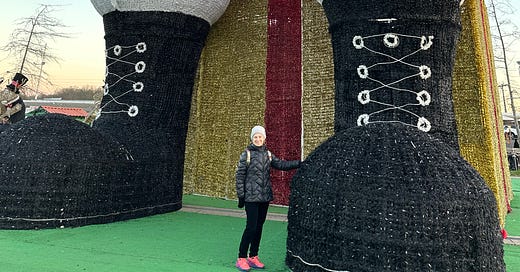



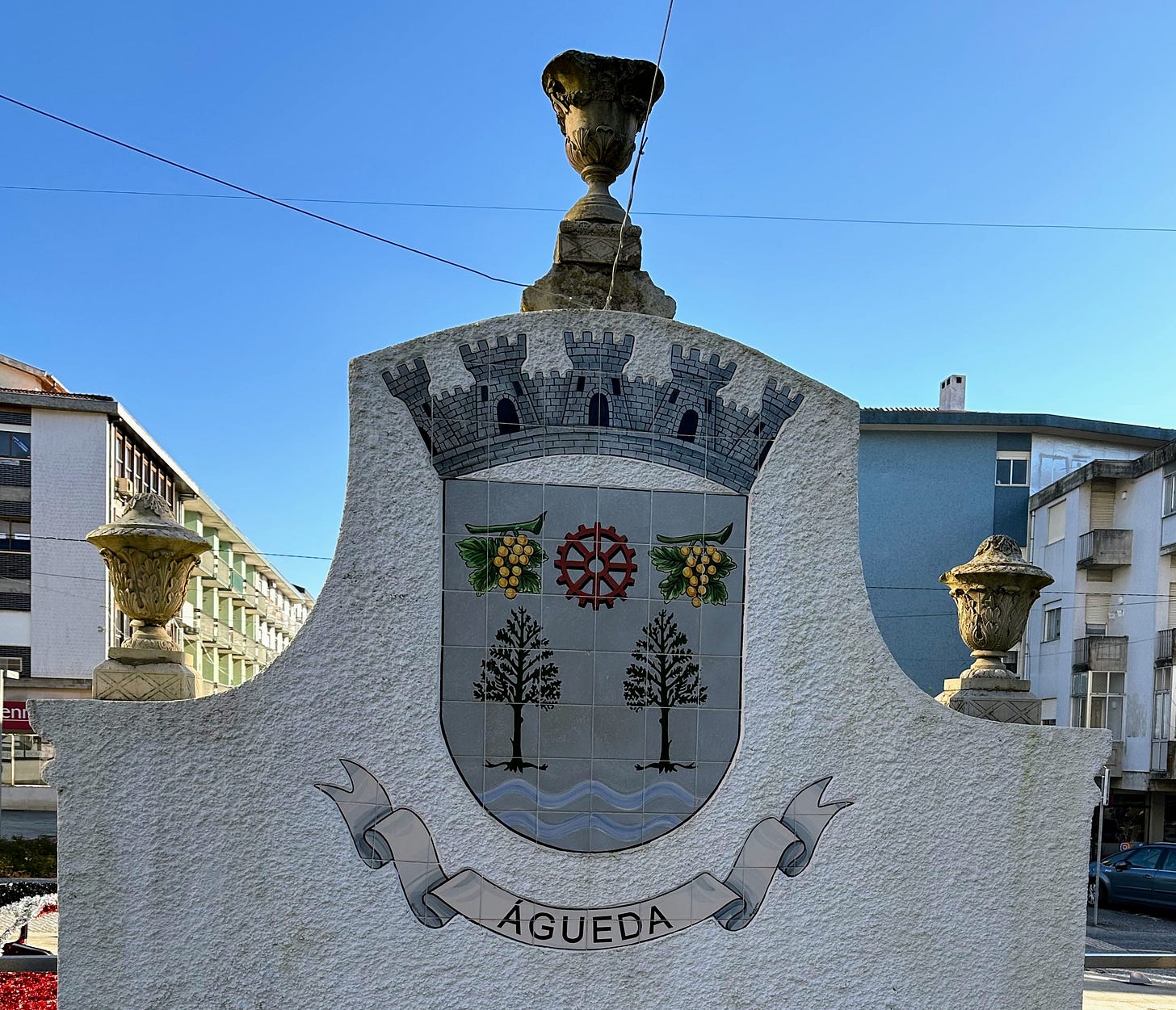

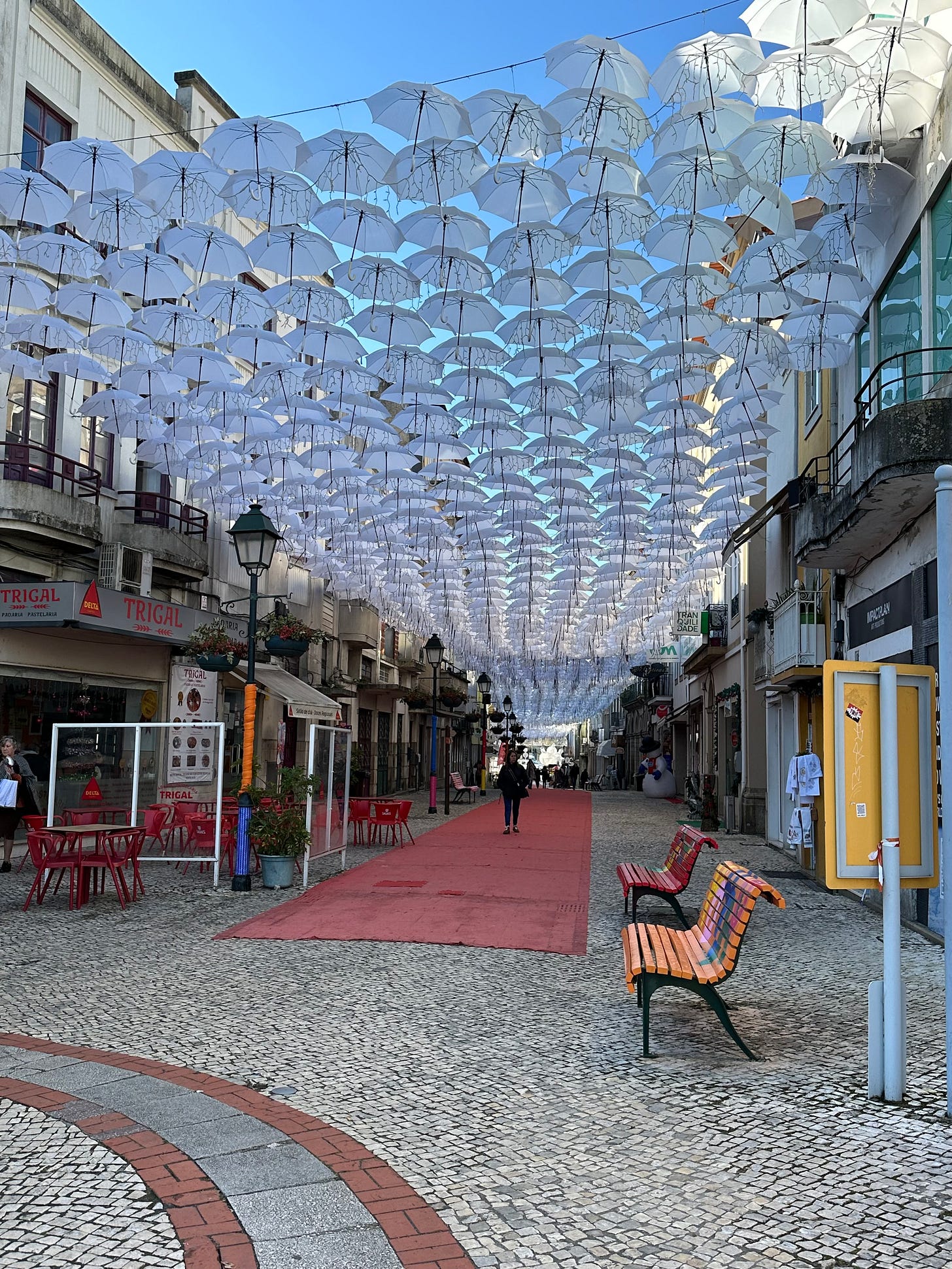
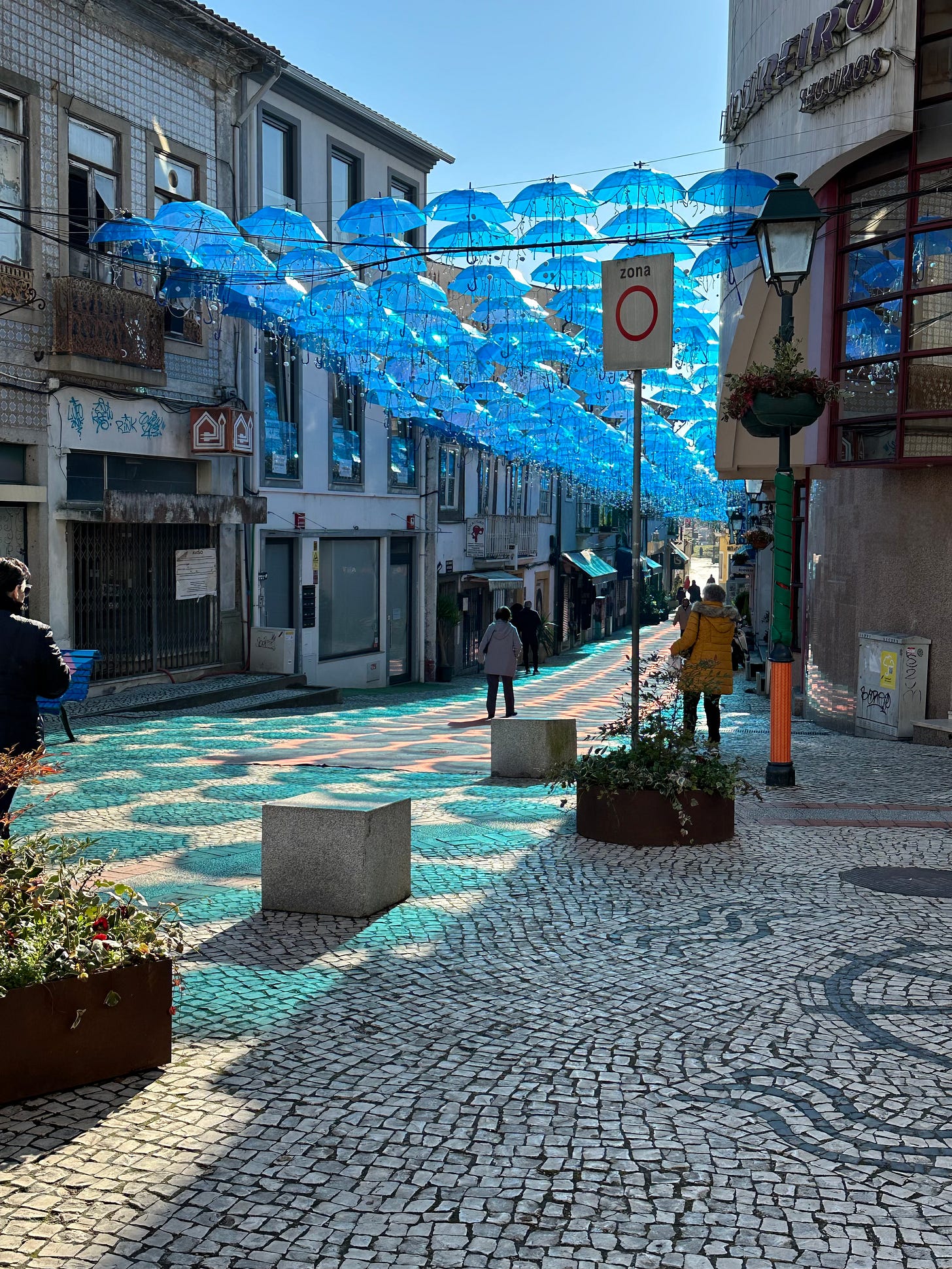
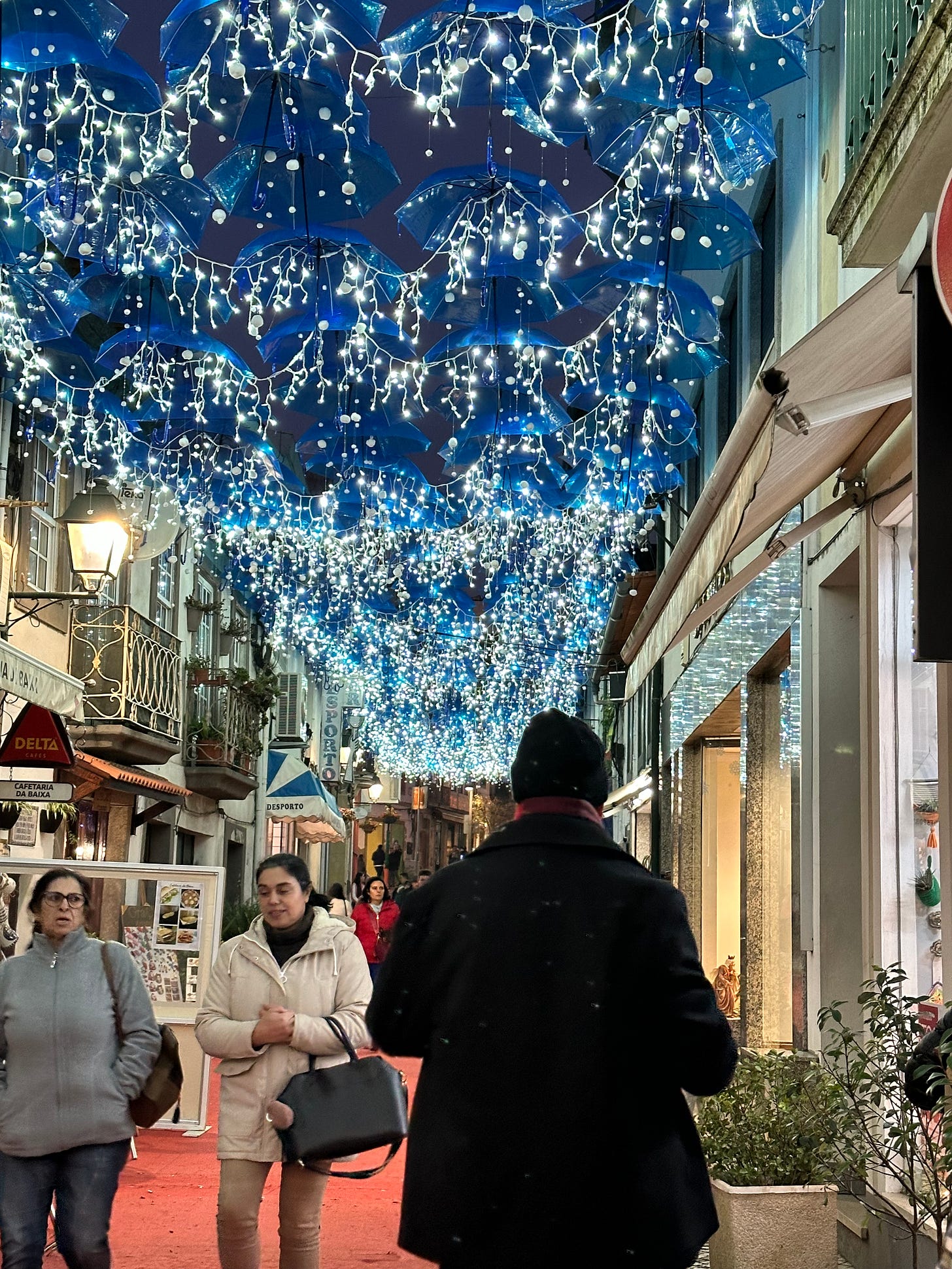


Nice description....love the blue street!👍
It used to be that in order to pronounce the "u" in "gue" or "que" they used " ü ". Agüentar. And freqüente. It certainly helped Portuguese learners know how to pronounce something if they'd never heard it. Alas, they did away with that in my lifetime, as well as dispense with the ^ in far too many words (gota/gôta), also making it hard to predict pronunciation if you've never heard the word. We used to write "êle" (3rd person singular) many moons ago. And aquêle, etc. They tried to standardize Portuguese spelling amongst all Portuguese speaking nations and in my mind they just created a mess. I've heard native Portuguese speaking youngsters pronounce words incorrectly according to how they are spelled, not according to how they are pronounced. Que bagunça.